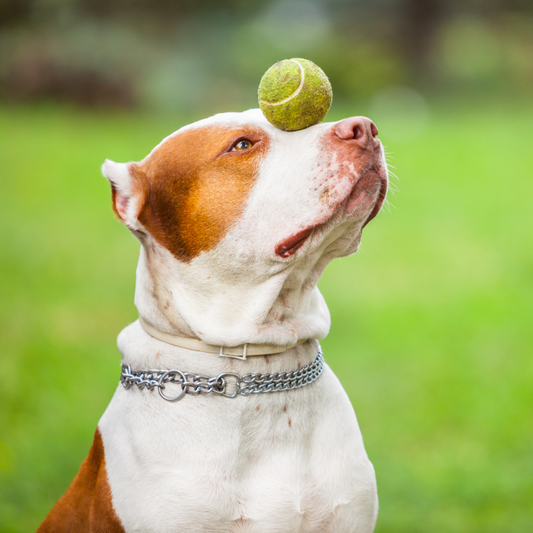Pets are more than just companions; they are cherished members of our families. But have you ever wondered
Why your dog barks incessantly at the mailman? or
Why your cat obsessively kneads your favourite blanket?
Understanding your pet's behaviour can deepen your bond and ensure their well-being. Let’s embark on this fascinating journey to understand the language of our furry friends.
The Basics of Animal Communication
All pets communicate through a combination of body language, vocalizations, and behaviour. Understanding these signals can provide insight into their emotions, needs, and instincts.
Body Language:
Pets express a lot through posture, tail movement, ear positioning, and eye contact. For instance, a wagging tail in dogs usually signals happiness, but the speed and height of the wag can indicate different emotions, from excitement to anxiety.
Cats, on the other hand, use their tails as mood indicators; a twitching tail often means irritation, while a raised tail signifies confidence.
Can you comment on this blog with what is your pets?
Vocalizations:
Barking: Dogs bark to alert, express excitement, or signal discomfort.
Purring: Cats purr softly to show contentment or relaxation.
Meowing: Cats meow to seek attention, communicate needs, or express emotions.
Growling: A low growl often warns of danger, discomfort, or defensiveness.
Behavioural Cues:
Actions like
Digging
Chewing
Scratching
can seem annoying but are rooted in natural instincts. For instance, dogs dig to create a cool spot to rest or to hide food, while cats scratch to mark territory and keep their claws healthy.
Common Dog Behaviour and Their Meanings:
Dogs are social creatures, and their behaviour often reflect their pack mentality.
- Excessive Barking: While barking is a natural way for dogs to communicate, excessive barking could indicate boredom, fear, or territorial instincts. Observing the triggers can help address the underlying cause.
- Chewing: Puppies chew to relieve teething pain, while adult dogs might chew out of boredom or anxiety. Providing appropriate chew toys can prevent destructive chewing.
- Tail-Chasing: This can be playful or a sign of underlying issues like anxiety or even a medical condition such as fleas or an anal gland problem.
- Head Tilting: Often perceived as adorable, head tilting usually shows a dog’s attempt to better understand a sound or see something from a different angle.
By nurturing your pet’s behaviour with patience and understanding, you create an environment filled with love, happiness, and mutual care.
Understanding Cat Behaviour:
Cats have unique personalities and behaviour that often puzzle their owners.
- Kneading: This behaviour is reminiscent of kittenhood when they kneaded their mothers to stimulate milk flow. Adult cats do this as a sign of comfort and affection.
- Bringing "Gifts": When your cat leaves a dead mouse or toy at your feet, it’s their way of sharing a prized possession with you, a sign of trust and loyalty.
- Hiding: Cats often retreat to a quiet, enclosed space when they feel stressed or unwell. If hiding becomes frequent, it might warrant a trip to the vet.
- Slow Blinking: Known as a "cat kiss," slow blinking is a sign of trust and affection. Returning the gesture can strengthen your bond.
The Role of Environment and Training
Your pet’s behaviour is not just instinctual; it is also shaped by their environment and training.
Consistency is Key: Pets thrive on routine. Changes in their environment or schedule can lead to anxiety and unusual behaviour.
Positive Reinforcement: Rewarding good behaviour with treats, praise, or playtime reinforces desirable actions. For instance, rewarding a dog for sitting calmly when guests arrive can curb jumping.
Understanding Triggers: Identifying what stresses or excites your pet can help you manage their responses. Loud noises like fireworks often frighten pets, leading to trembling or hiding.
Behavioural Red Flags
While many behaviour are normal, some may indicate a problem.
Unprovoked aggression towards humans or other animals may arise from fear, pain, or dominance issues, often requiring professional training or veterinary consultation. Sudden changes in activity levels or social behaviour, like lethargy or withdrawal, can indicate illness or emotional distress. Repetitive behaviour such as obsessive licking, tail-chasing, or pacing may suggest stress, anxiety, or an underlying medical problem.
Building a Stronger Bond Through Understanding
Understanding your pet’s behaviour enhances communication and strengthens your relationship. Here are some tips to deepen your connection:
- Spend Quality Time: Regular play and cuddle sessions build trust and affection.
- Learn Their Preferences: Each pet is unique. Understanding what they enjoy or dislike creates a harmonious relationship.
- Be Patient: Like humans, pets have moods and bad days. Patience and empathy go a long way in fostering trust.
Interpreting your pet’s behaviour requires observation, understanding, and love. By paying attention to their cues and responding appropriately, you create an environment where they feel safe, happy, and loved. In return, they offer unwavering loyalty and companionship, making every effort worthwhile.










